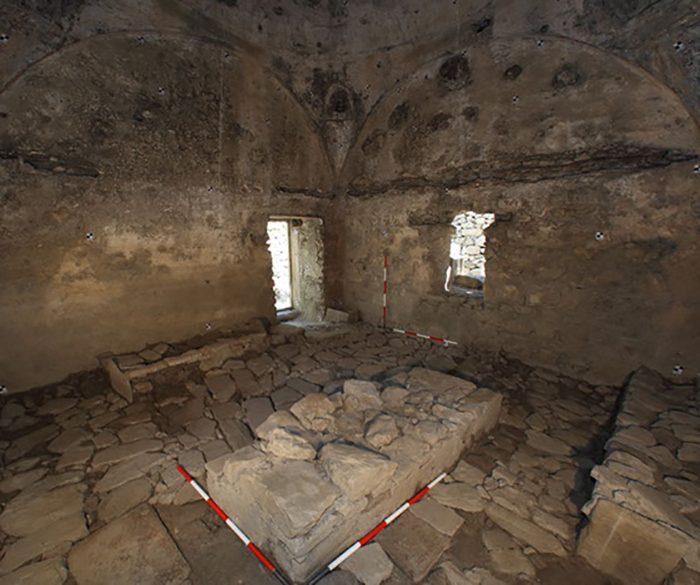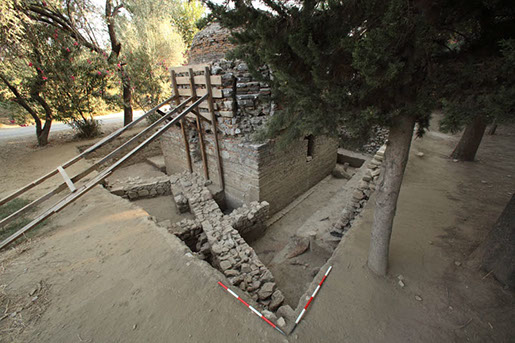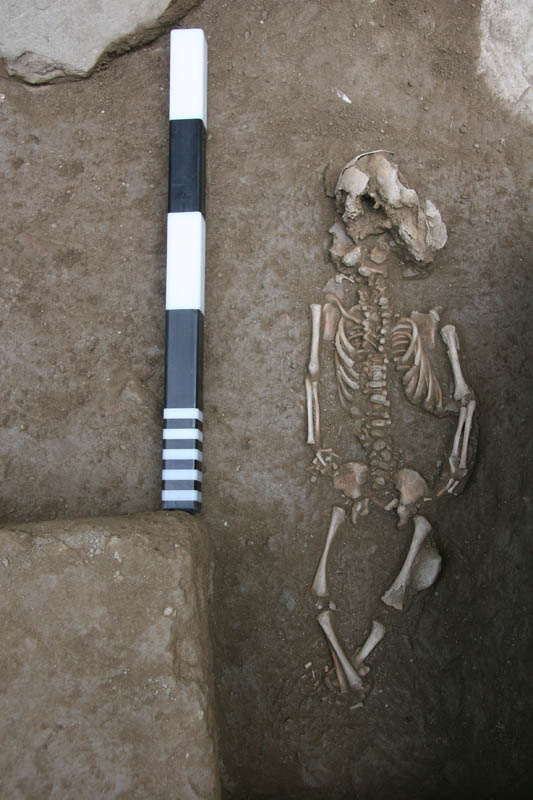Holy Transformations: Burials and Pottery

The Türbe
In Ephesus an ideal case study for the transition from Christianity to Islam is the Türbe next to the Artemision, an Islamic mausoleum covering a Byzantine cemetery. The Türbe is dated to the princedom of the Aydınoğulları (1304-1425), as witnesses the masonry and the ceramic found in the foundations. Between 2009 and 2012 the Österreisches Archäologisches Institut carried out the archaeological investigations of the monument.
Twenty burials, dated between the 14th and the 17th century, were found around and below the structure of the Türbe. The biography of the location was divided in four consecutive phases. The building of the mausoleum belongs to the second phase, when seven late Byzantine burials were moved in secondary deposition into a singular grave (“Grab 12”) to create space for the new structure. The excavations did not find traces of funerary activity for the third phase .
Funerary contexts hold a great quantity of information on the religious practices and the changes inducted by religious conversion. Religion greatly influences the activities carried out in funerary contexts and a change in the community’s faith could completely alter the material evidence, for example by allowing or banning specific actions, but also by stressing certain cultural connections rather than others. Because of this, it can be useful to look at specific objects in cemeteries, which may show change over time. In Ephesus we expected that the transition from Christianity to Islam would sign a break with the pottery traditions and provenance.
Pottery from the Türbe
The analysis of the pottery functions and of the quantities of imported ware contained in graves seemed a promising way to understand if an enriched ceramic assemblage accompanied the growth in monumentality in the funerary area, testified by the building of the Türbe. In fact, pottery functions and provenance are a good indicator, amongst other, for the commercial network of a community. The study focused only on the pottery contained in the fillings of the burials because of the possibility to compare the chronologies of the pottery with that of the 14C of the bones in the graves.
Analysing the Pottery
Out of th 20 burials near the Türbe, only nine contained pottery . Since one of the graves was a secondary burial, it can be disregarded as well. This left eight graves to observation, of which three were useful in understanding the early use-phase of the cemetery, and five the last period.
While the amounts of sherds in early and late periods seem similar, it turns out more Light Utility Wares are found in the earlier graves. On top of that, the Table wares from grave 5 were all from the middle Byzantine period, and the single Heavy Utility fragment was a residual Roman sherd.
This is very interesting, as this means these very prestigious graves had fairly common pottery a grave goods.
Click to Enlarge
Conclusion
The similarities between the ceramics in the different phases may indicate that religious conversion only had a minor impact on the material culture connected with death and burial in the Ephesian community. However, there are interesting contrasts between graves 5 and 16.
It also seems that the pottery in the graves had little to do with prestige, and more with their functional qualities. The spatial organisation of the graves links them directly to the the Christian practice of the burial ad sanctos, thus constituting an element of continuity between the two religions. In the same way, the lack of change in pottery functions might indicate the effort to change the meaning of funerary practices without changing their exterior appearance.





